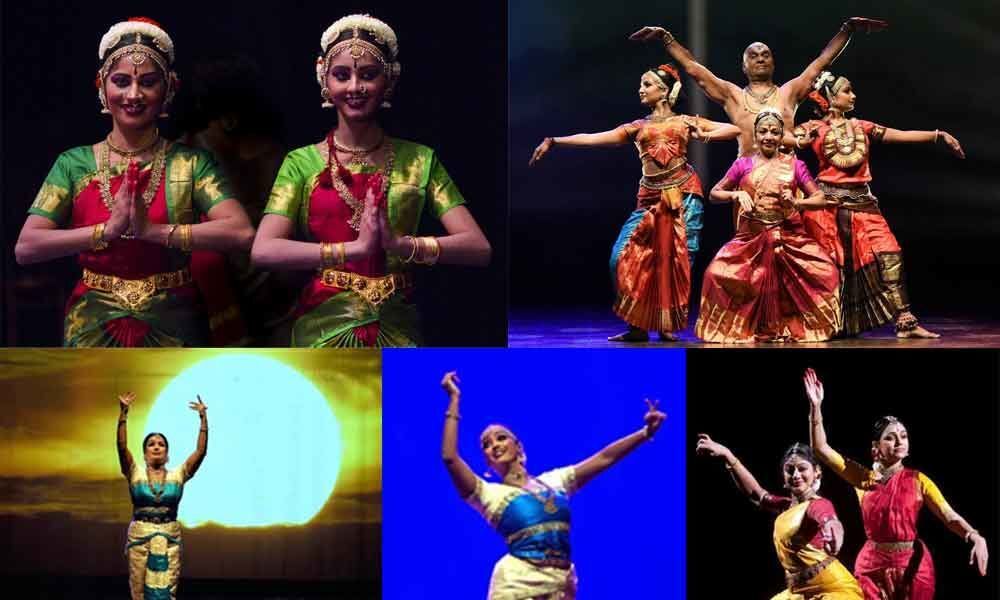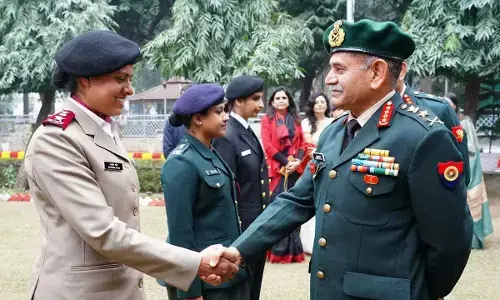The 'Mummy' returns

Strike a perfect chord with audience
Jan Georges Noverre's birthday, popularly known as International dance day celebrated every year on 29th April.
The birthday of the creator of the modern ballet has become important for classical Indian dance too where dance ballets leave an indelible impression on lovers of this beautiful art form.
In Natya or nritta - the dramatic element of dance, the rhythms and phrases of music are reflected in the hand and foot movements.
The portrayal of mood through facial expressions, hand gestures and foot movements are the three important components of dance in the various schools of Indian classical dance.
While different classical forms are characterised by varying emphasis on the three main components, what one sees in common to all forms, is the guru-sishya parampara (learning from the guru) and the tradition of mother-daughter-duo making an impact both individually and together.
It is not unusual to come across mothers who deferred their passion for dance for years only to have them re-ignited when their daughters evince interest in the same.
The interesting case of a mother-daughter duo of teachers Sheila Narayan and Shreya Narayan teaching another mother-daughter-duo of students Dr Aneeta Karthik and Arnika Karthik in the Shreyas School of dancing in the United States is a case in point.
"My mom and I get into intrinsic arguments every day about the sequence of steps, but we have twice as many ups and downs and my mom and I have never been closer.
I wouldn't trade this experience for anything" says Arnika speaking of this learning together experience.
Many eminent dancers have passed on the love of dance to their children for whom learning perhaps begins in the womb as in the case of other art forms where progeny are literally born into the art.
So we have famous dancers teaching their children, pairing up with them for performances or dancing together wherever the form demands it.
Rajeshwari-Vyshnavie Sainath, Rama Vaidyanathan-Dakshina, Vyjayanthi Kashi- Prateeksha Kashi, Maya Rao—Madhu Rao, Bharati Shivaji –Vijayalakshmi and Radha Raja Reddy with daughters Yamini and Bhavana are part of a long list of distinguished dancers where the mother-daughter partnership is a riveting feature.
And the dance forms are such that it's no mystery why the interest is reignited.
According to Encyclopedia Britannica, Indian dancers have a vast repertoire of gestures through which they express complex events, ideas and emotions.
"There are 13 gestures of the head, 36 different glances and 67 mudras or hand gestures, that can in various combinations yield several thousand different meanings" it states.
Most dancers have acknowledged that learning from mothers doesn't ensure special privileges or concessions in an art form where skills are honed through regular practice or sadhana.
It also does not assure fame without hard-work since this is a field where audiences judge the dancer based on his or her work and not lineage. No nepotism here!
As a dance critic puts it, "Here practice makes perfect. One can't say I have learnt it all.
If you skip the all-important sadhana for a day, your body knows it.
If you miss it for two days, the musicians and those doing the nattuvangam know it. And if you skip sadhana for a week, everyone in the audience knows it".
Every stage performance is a different experience demanding a proper mix of the emotive aspect of dance, the precision of expression and physical fitness.
All the dancers in ballet get into the skin of the characters they portray where off-stage relationships make little difference.
That's precisely the reason why relationships don't matter to the different mother-daughter duos lighting up the stage with their electrifying performances.
The relationship with the audiences becomes the most important bond and this is what International dance day is all about.










